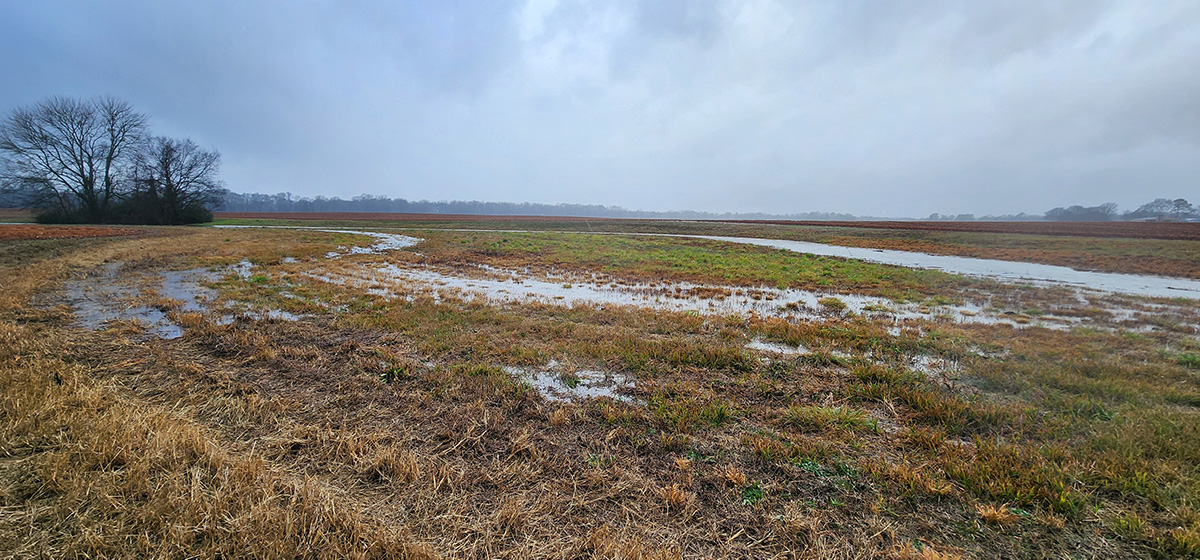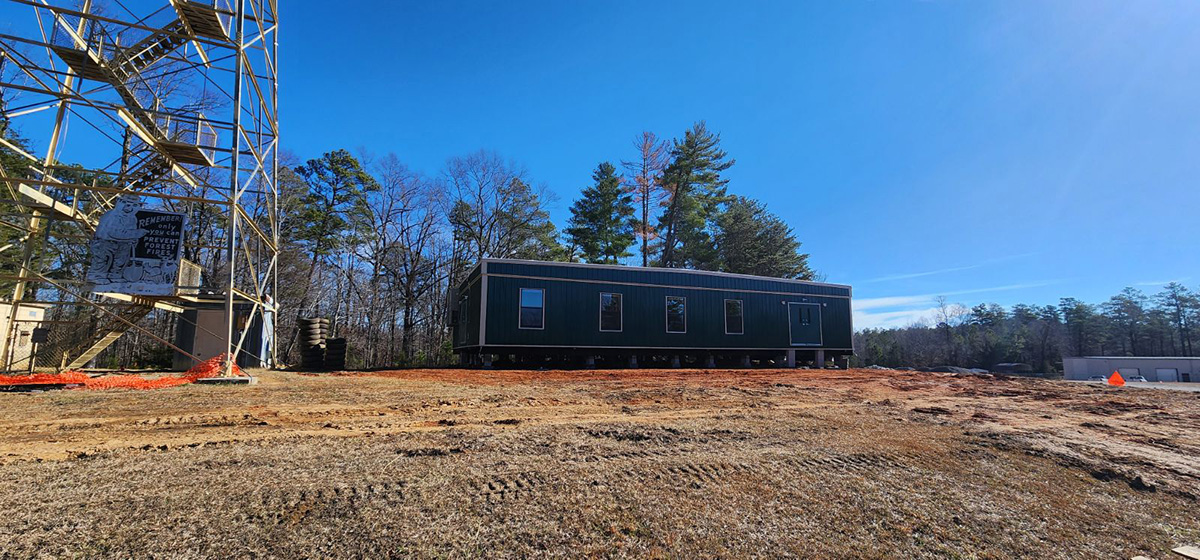New Delays Affect Start of Bankhead National Forest Observatory
Published: 23 February 2024
Working through weather and staffing issues, ARM intends to have some sites operational in June 2024

The Atmospheric Radiation Measurement (ARM) user facility is experiencing further unexpected delays in the construction of its newest long-term atmospheric observatory in northern Alabama.
Site development for the Bankhead National Forest (BNF) observatory resumed in November 2023, but extreme weather has presented obstacles throughout the winter. In addition, some procurements have taken more time than planned, and there have been delays in some safety and environmental approvals.
In mid-January 2024, a major snow and ice storm led ARM to stop onsite work for a week. Ahead of the storm, Alabama Gov. Kay Ivey declared a state of emergency in 25 counties, including Lawrence, where the BNF’s main site will be located. The storm ended up closing schools and making roads around the region impassable.
“Safety and security of all working at the site is always our top priority,” says ARM Associate Director for Operations Nicki Hickmon.
Rain has also been an issue in completing site development activities. On average, the BNF region receives about 5.5 inches for all of January, but January 2024 rainfall exceeded that amount in many areas. For example, the nearby town of Cullman got 6.52 inches for the month, including 2.76 inches on January 9 and 2.43 inches from January 25 to 26.
Because the rain keeps coming, the ground is very muddy around the BNF area. This has made it hard to compact soil and install the concrete pads that will support shelters and instruments in the field.

Despite the weather challenges, ARM has some progress to report. The trailers for the main site office and Guest Instrument Facility are set in place. BNF Manager Mike Ritsche adds that conduit for the main electrical cables is buried at the main site and nearby tower location, and work is underway at the main site to develop the parking area and install a new fence line.
ARM intends for the main site and three supplemental locations to be operational in June 2024. Guest instruments will be allowed onsite as soon as operations begin, says Hickmon.
The BNF will have a 140-foot walk-up tower and two under-canopy towers near the main site, plus a pair of scanning radar sites outside the forest. ARM is working on a new timeline for the start of operations at the tower and radar sites.
Placing the research tower within the forest is complicated by the need to plan for safe installation and operation of the tower while also avoiding the creation of unnatural openings in the forest canopy that would affect the representativeness of the tower measurements.
Teamwork Helps Move BNF Forward
Additional challenges come with coordinating ARM staffing schedules. Some staff needed for the BNF setup, such as instrument mentors, are currently committed to wrapping up one mobile deployment in California and setting up another in Tasmania.
Thankfully, staff at ARM’s Southern Great Plains (SGP) observatory in Oklahoma have provided support along the way for the BNF, including preparation of instruments and shelters that will soon be installed in Alabama.
“There is always a bright side to things, and the SGP site has brought that in droves with their support of the BNF observatory,” says Hickmon. “Their patience with the delays and training of new BNF staff are just the latest examples in a long history of support for ARM well beyond the SGP site. Additionally, we would like to thank the ARM and ASR (Atmospheric System Research) communities for their patience as we work through the challenges.”
Keep up with the Atmospheric Observer
Updates on ARM news, events, and opportunities delivered to your inbox
ARM User Profile
ARM welcomes users from all institutions and nations. A free ARM user account is needed to access ARM data.


















